2021 Workplace Forecast: Disruptive Changes Caused by the Pandemic May Last Forever, But Organizations Can Find Silver Linings for the Workplace
Q&A with Robin Weckesser, CEO, a3 Workplace Strategies
What are the lasting effects as well as silver linings for workplaces as the pandemic lingers?
The workplace has been evolving for decades, but we didn’t anticipate the ravaging effects of COVID-19, which have dramatically accelerated the rate of workplace changes. Today, most corporate leaders, even those who may have been somewhat intransigent about new workplace solutions before the pandemic, now recognize that new visions and innovative approaches are critical to their survival. The good news is that they are beginning to think more strategically and are evaluating plans toward workplace enhancements and transformation.
What are tangible benefits of the new normal, including remote work?
The work-from-home model is here to stay: Numerous studies* support this and point not only to lower occupancy costs associated with a smaller footprint, but also happier and more productive virtual workers. There are significant logistical, psychological, and environmental benefits when employers avoid long and unnerving commutes. Also, new health and safety protocols in the office will promote the well-being of the workforce well into the future, as employers recognize that some workers need to be on-site while others will eventually return to home base on a staggered basis, at least for key meetings.
What is the timeline for a return to the office?
The timing for a return to the office and the factory is fluid as we monitor the virus and the delivery of vaccines. As a bell-weather sign, Salesforce, San Francisco’s largest private company, recently declared “the 9 to five workday is dead,” and joined with other tech giants like Facebook and Microsoft in announcing it would permanently allow many employees to work from home, even following the pandemic. In any event, we should be seeing more workers return by Q3, but this will vary according to the industry sector, job role, and individual circumstances, such as employees who must work remotely while their children are still at home. This begs the need to be flexible and give staff a choice.
What are the expected pitfalls of a virtual workforce?
Working from home can lead to unwelcome social isolation, and it can make home-life more stressful. But as the work/family boundaries blur, it is vital that virtual workers have the right technology in their home offices, be mindful of data security issues and cyberattacks, and overcome bandwidth situations that may ensue with other household members also online. Another ongoing challenge will be to enable seamless communication between employees and their managers and colleagues. In this light, it is important for supervisors to monitor the work of employees at home (even though studies show that virtual workers typically dedicate more job-related hours at home than in the office). Management training will become more important than ever!
How can you ensure better communication when you are separated?
We need to more efficiently plan meetings—both one-on-one and group—via Zoom and other channels. In fact, it’s been proven that, despite the challenges caused by physical separation, it’s possible to actually enhance communication through more frequent and well-planned virtual meetings.
What about collaboration and the open office? Is that dead?
The pre-pandemic push for office densification and open areas has yielded to more of a flex-space model. And while there’s no substitute for face-to-face interaction and spontaneity, we need to be creative and resourceful in promoting the exchange of ideas, either virtually or six feet apart at the workplace. So, while a pure open office model is no longer realistic, the concept isn’t dead. Rather, the hybrid model, with open and private spaces and accommodations for hoteling and workplace distancing, should prove to be the norm in the new normal. In addition, the co-working concept will continue in some form. Of course, space reconfiguration and programming will vary according to unique company requirements.
What new products and structural changes can we anticipate for offices?
Touchless technology affecting surfaces, elevator buttons, etc.; UV lighting that kills germs; vinyl film (“office frosting”) to create discreet workspaces; improved air filtration and HVAC systems; screened walls; specially designed sit-stand furniture—these are all elements that organizations need to consider as they adapt to new health and safety protocols. Further, Artificial Intelligence is becoming a reality, with PC’s, smartphone apps, and even voice-operated commands now able to control windows and light tinting. And, as another silver lining, this futuristic wave also presents growth opportunities for many businesses that are helping to build post-pandemic offices.
What are your thoughts about the exodus of companies from the Bay Area?
It’s true that many corporations, large and small, are lured by the lower taxes, lower cost of living, and a less rigid regulatory environments in places like Austin, Miami, and Nashville. Some have moved their headquarters or field offices accordingly. However, there’s a reason why the Bay Area and Silicon Valley is still the country’s hub for technology and life sciences. With our foundation of technology leaders, world-class universities, intellectual capital, and an exceptional talent pool, we should maintain our cache. And despite the high cost of housing, the housing market has remained strong, especially in S.F. Millennials and couples building families will continue to flock to our region because of its business opportunities, vibrant lifestyle, diversity, cultural richness, and moderate climate.
How much will re-imagined workplaces cost, and what ROI can organizations expect?
Workplace upgrades will certainly come at a cost, which will vary significantly from organization to organization. But when you consider the alternative of inaction—i.e., the demise of your enterprise—the decision to invest is a no-brainer. In fact, companies can save many millions of dollars and protect their bottom-line by avoiding the wrong decisions and making the right investments. It starts with understanding that you can’t over-invest in people, who are ultimately much more important than bricks-and-mortar.
What about the importance of corporate culture?
Maintaining your culture is more challenging with a virtual workforce, but it is imperative to sustain the positive aspects of your culture and also address areas that may be deficient. Companies should be sensitive to the needs of a multi-generational workplace, where digital natives and baby boomers have different skillsets. Also, this may be a good time to re-access the corporate environment regarding mental health issues as well as racial and social inequities that have become more pronounced during the pandemic.
What are your thoughts about economic recovery?
The lingering pandemic and job loss has led to significant downsizing (Yelp in San Francisco is one recent example) as well as higher vacancy and millions of square feet in the sublease market throughout the Bay Area. But we are already seeing signs that the economy is bouncing back, and forthcoming federal stimulus packages will help. In the meantime, present conditions give tenants a great opportunity to negotiate for less expensive rents, landlord concessions, and more flexible/shorter lease terms.
With so much at stake and so many options for workplace solutions, how can companies find the right resources and partner with the right consultants?
Pursuing a change strategy and having the right resources is not synonymous. The first step is to recognize that your number-one priority is to optimize the safety and well-being of your workplace. Next, you need to build a customized strategic plan. Part of this plan should include provisions for engaging staff and building trust. But who is best suited to direct this process from start to finish…from initial audit to planning to actualization? Increasingly, companies are turning to experienced, specialized, and objective workplace consultants who are also experts in change management and who will provide oversight of all vendors. After all, it takes a village of invested parties all working toward a common goal.
Any final takeaways?
We at a3 always say organizations need “a workplace that works,” and today that resonates more than ever. We also always affirm that “one size doesn’t fit all.” At the end of the day, even with all the adjustments dictated by the new normal, it’s still all about reaching a sense of balance and creating a holistic environment that promotes the common good. Yes, we live in uncertain and turbulent times, but we are resilient and have the capacity to survive and thrive!
*A recent CoreNet Global report revealed the following:
- 69% of companies surveyed said traditional office schedules are a thing of the past, and they are open to hiring staff from anywhere with permission to work entirely from home.
- Respondents predict that only 46% of the workweek will the spent in the office, with 43% working from home, and 11% in a co-working environment.
- 59% said they expect their office footprints to shrink.
*A recent polling of Twitter employees indicated that 10% want to work in the office entirely, 20% want to work exclusively from home, and the rest prefer a combination.
Robin Weckesser is the CEO of a3 Workplace Strategies, a workplace consulting group based in San Jose and serving organizations throughout the United States and worldwide. The firm provides a full range of project management and facilities management services, including office solutions for the “new normal;” strategic planning; change management; site selection; design, construction, and relocation oversight; space programming; and open/hybrid office environments. For more information, visit a3workplacestrategies.com or email Robin at rweckesser@a3workplace.com.




Sorry, the comment form is closed at this time.